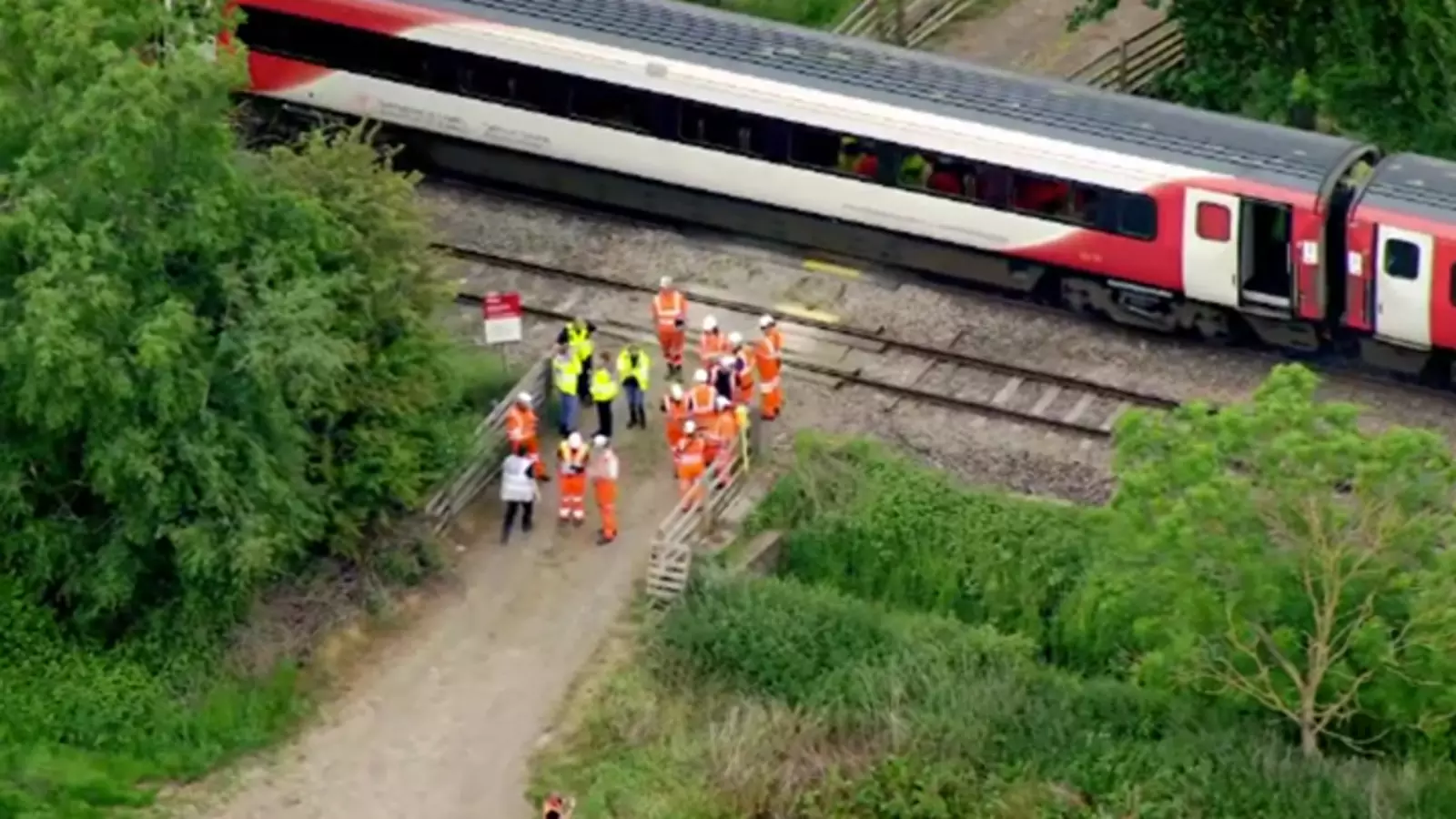On a seemingly ordinary Thursday morning, an alarming incident occurred in Herefordshire that has sent shockwaves through the community and raised critical questions about railway safety. A train collided with an agricultural trailer at a level crossing, leading to multiple injuries and a reminder of the vulnerabilities associated with our transport systems. Emergency services remained on high alert, and the fallout was nothing short of chaotic. It is imperative to recognize that what transpired at this crossing is not an isolated event but rather a consequence of larger systemic issues.
Victims of Negligence
More than a dozen people were injured during this unfortunate incident, including a man who was airlifted to a hospital due to serious injuries. While we can express relief that most injuries were treated on-site, this downplay of harm is simply unacceptable. The impact on those involved, from emotional trauma to physical injuries, cannot be quantified. We must confront the reality that safety protocols at level crossings often come up short, and the question arises—who is truly responsible for ensuring it doesn’t happen again? A 32-year-old man from Bromyard was arrested for allegedly endangering safety, but this personal blame does little to address the systemic shortcomings that paved the way for this event.
Systemic Flaws in Railway Safety
This tragedy echoes a broader concern about rail infrastructure and regulations surrounding level crossings. The Rail Accident Investigation Branch (RAIB) has sent inspectors to gather evidence and start an examination, yet we must ask ourselves why such measures are only taken after the fact. Level crossings that require manual operation often prove perilous, especially in areas like Herefordshire where agricultural trailers may frequently cross tracks. It’s high time we advocate for more rigorous safety measures to prevent future accidents; automated systems or improved signage could be a step in the right direction.
Community Response and Aftermath
In the immediate aftermath of the collision, the disruption was palpable. Transport for Wales confirmed that services were halted between Hereford and Craven Arms, leaving countless travelers stranded. The fact that the railway lines were blocked for an entire day serves as a stark reminder of how interdependent our transport systems are. While alternate transportation solutions were offered, the mere inconvenience is not to be taken lightly. Each delay represents a ripple effect in the lives of many around the region who rely on public transport for their daily commute or essential travel.
The anger and frustration are palpable and justified. We must channel this energy into advocating for change. As a society, we have a responsibility to push for meaningful reforms to protect lives, promote safety, and ensure that our infrastructure does not become a breeding ground for negligence. It is our collective duty to demand better, not only for ourselves but for the generations to come. Let this avoidable tragedy not fade into memory but serve as a rallying cry for reform.

